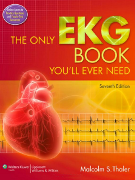What is Telemetry
Individuals who work in the healthcare sector as an EKG technician or cardiac technologist are required to monitor heart disease patients through the use of telemetry. Those who are not familiar with this unique device and who find themselves asking, what is telemetry, can benefit from a basic understanding of how the technology came about and its uses in other industries. This approach will allow technicians to develop a more informed perspective of the services that they provide while ensuring the safety and well-being of patients.
What is Telemetry
In the simplest terms, telemetry is the transmission of data from sources that are difficult to connect to a monitoring device. The communication that occurs between data collection devices and monitoring devices is often wireless, but may involve computer and mobile network connections. Telemeters are used to receive transmitted data and often include a sensor along with a display. Some equipment may also incorporate a control mechanism that is used to remotely manipulate the data collection device. In healthcare, telemetry is most often used for monitoring patients and may not include remote control capability.
Data transmission and collection using telemeters has been used for many years to monitor weather patterns and to transmit information about security between branches of the military. Although telemetry was first used in a military capacity, it was soon discovered that it could be used to monitor for seismic activity and other natural phenomenon. The early 20th century also saw the use of telemetry in space missions that resulted in the landing of probes on Mars. Today, telemetric devices are widely used in the oil and gas industry, racing, agriculture, defense, space exploration, flight testing, law enforcement, retail, healthcare, and much more. For the purposes of this site, the answer to the question, what is telemetry, is mostly centered on its use in heart monitoring.
Telemetry in Healthcare
Modern telemetric technology has found widespread use in cardiac care units because of its ability to transmit information about heart function. Establishments that offer cardiac care services often outfit individuals with a transmitting device that is similar to what is used in the administration of an electrocardiogram. This device sends real-time information about heart conduction and contraction to a station where EKG technicians and cardiovascular technologists are tasked with providing constant observation. In the event that a patient experiences an abnormal or life-threatening cardiac event, the telemeter may activate an alarm system that alerts medical personnel who may decide to provide rapid intervention. Telemetry is also used to monitor the heart during invasive and noninvasive medical procedures that could cause an arrhythmia.
According to the US Food and Drug Administration (FDA), wireless medical telemetry is used to monitor health parameters at a distance using radio frequency communications between a transmitter on the patient and a central monitoring station. One of the major benefits of this technology in patient care is the fact that it allows patients to be monitored while they are walking about. This provides more freedom to patients since they do not need to be hard wired to a monitoring device that is attached to a traditional wired network. Telemetric technology has also improved the way nurses and physicians manage heart disease patients because it allows for more diverse testing and monitoring in a variety of different scenarios that strain the heart.
Nearly everyone who works in a cardiac care unit will encounter telemetry at some point in their careers. Individuals who plan to work as a technician need to have an understanding of the use of telemetric technology in a cardiac setting. Most training programs will address the question, what is telemetry, in great detail before approving individuals to provide care to patients. A nationally recognized certification exam will demonstrate competence so that the patients can be confident they are benefiting from the highest quality of care.





